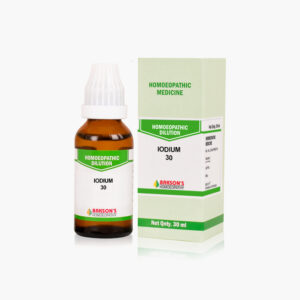What is Hypothyroidism?
Hypothyroidism or underactive thyroid results from low levels of thyroid hormone with various aetiologies. The most common cause of hypothyroidism is the inability of the thyroid gland to produce a sufficient amount of thyroid hormone. It may also result from pituitary and hypothalamus dysfunction as hypothalamus secretes thyrotropin-releasing hormone (TRH) that stimulates the pituitary gland to produce thyroid-stimulating hormone (TSH). TSH stimulates the thyroid gland to produce and secrete mainly T4 and T3 (in smaller quantities). Alteration in the structure and function of any of these organs or pathways can result in hypothyroidism.
The disorder is common in women with small stature and prevalence rises with increasing age.
Aetiology
The cause of an underactive thyroid may be primary or secondary. Primary hypothyroidism results from inadequate production of the thyroid hormone from the thyroid gland. Secondary hypothyroidism results from any pathology in the pituitary gland or hypothalamus.
The most prevalent etiology of primary hypothyroidism is an iodine deficiency in iodine-deficient geographic areas worldwide. Some of the causes of primary hypothyroidism are-
- Hashimoto thyroiditis (most common)
- Drugs such as amiodarone, thalidomide, oral tyrosine kinase inhibitors (sunitinib, imatinib)
- Thyroid radioactive iodine therapy (used to treat Graveעs disease)
- Thyroid surgery
- Radiotherapy to head or neck area
- De Quervain disease (Granulomatous thyroiditis)
- Postpartum thyroiditis
Secondary and tertiary hypothyroidism, also known as central hypothyroidism, is caused by a defect in the hypothalamic-pituitary axis. Its causes include the following:
- Pituitary tumors
- Tumors compressing hypothalamus
- Sheehan syndrome
- Thyroid releasing hormone (TRH) resistance
- TRH deficiency
Sign and symptoms
The signs and symptoms can be mild and non-specific depending on the underlying cause of hypothyroidism. Features like cold intolerance, puffiness, decreased sweating, skin changes, sleep disturbances, menstrual cycle abnormalities, weight gain, and galactorrhea may be present. Symptoms of depression, anxiety, psychosis, cognitive impairments such as memory loss can be present.
Physical examination of the thyroid gland is important, however most of the patients have normal thyroid examinations.
Diagnosis
Screening of people with following risk factors must begin at the age of 35 years and should continue every five years-
- Women over the age of 60
- Pregnancy
- Patients with a prior history of head and neck irradiation
- Patients with autoimmune disorders and/or type 1 diabetes
- Positive thyroid peroxidase antibodies
- Family history
Serum TSH levels is the main investigation to diagnose primary hypothyroidism. Determination of anti-thyroid antibodies such as the thyroid peroxidase antibodies must be taken into consideration to rule out autoimmune thyroiditis. Imaging studies (ultrasound) of the neck are not routinely recommended for hypothyroidism.
General management
Appropriate pharmacological therapy is recommended.
Warning: Above information provided is an overview of the disease, we strongly recommend a doctor’s consultation to prevent further advancement of disease and/or development of complications.
Disclaimer: The information provided herein on request, is not to be taken as a replacement for medical advice or diagnosis or treatment of any medical condition. DO NOT SELF MEDICATE. PLEASE CONSULT YOUR PHYSICIAN FOR PROPER DIAGNOSIS AND PRESCRIPTION.



 Login
Login






